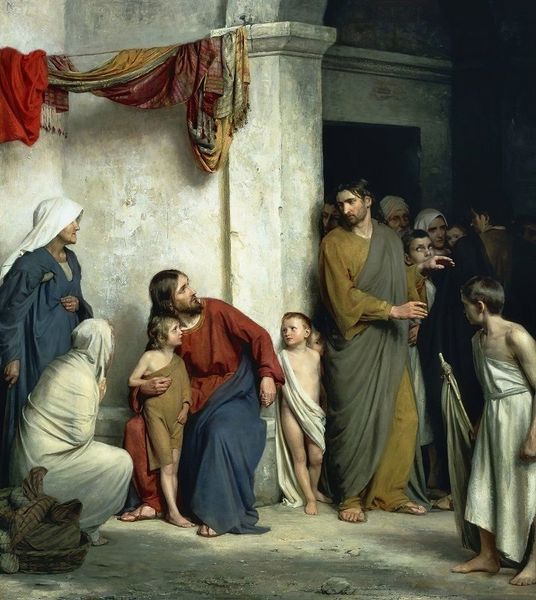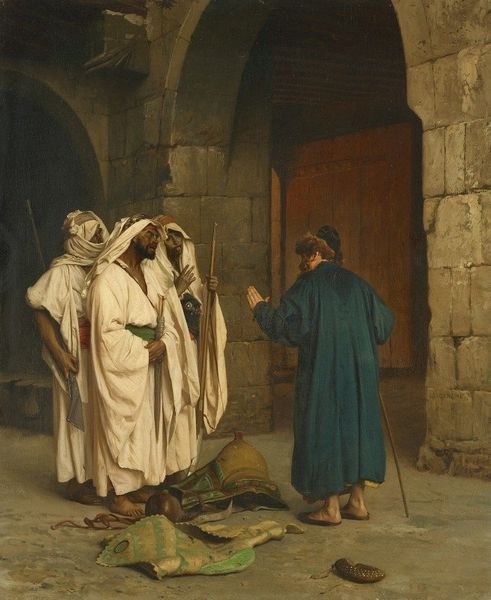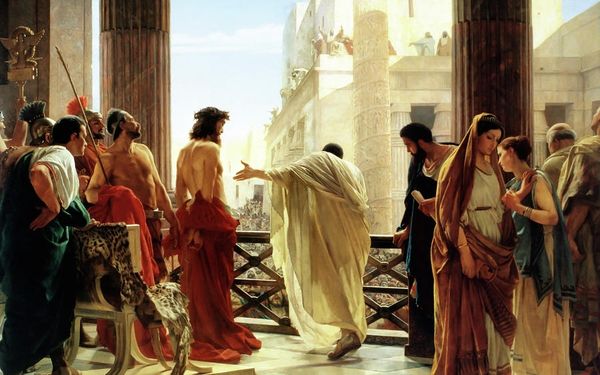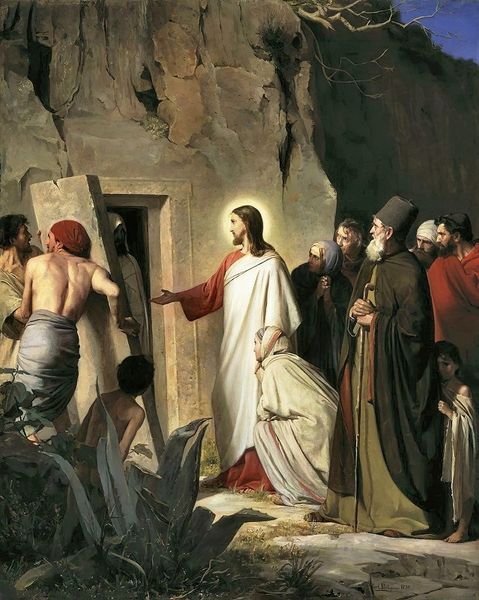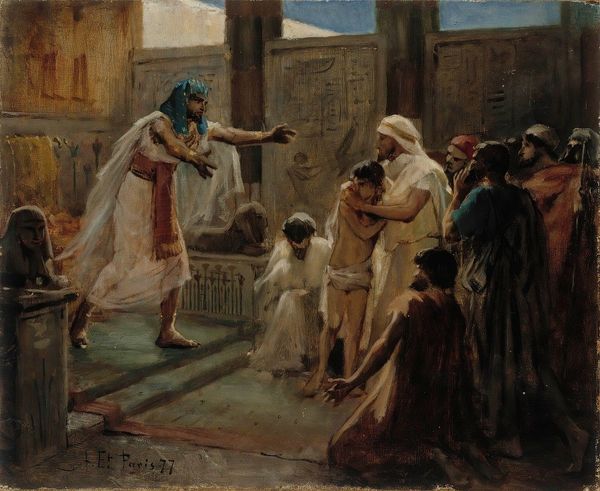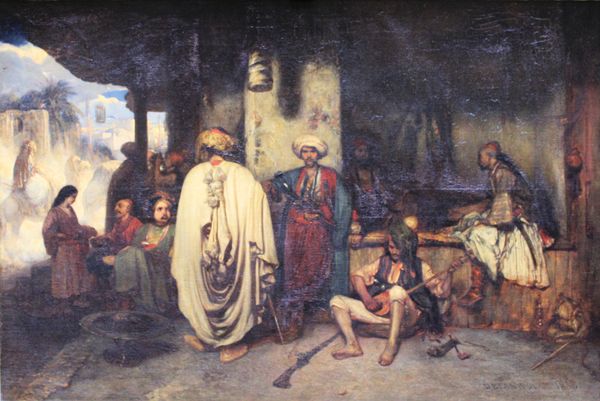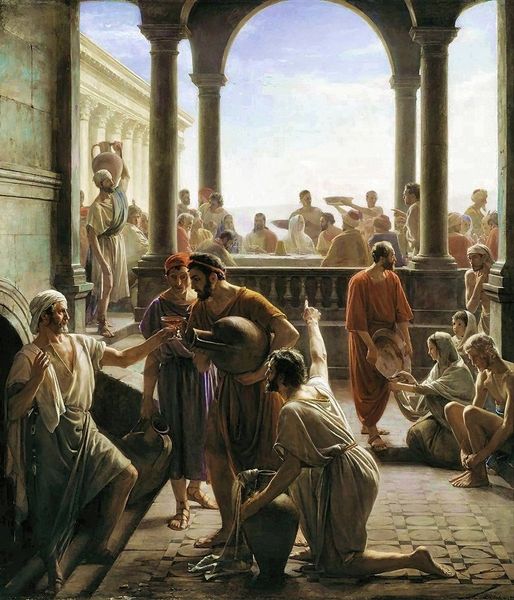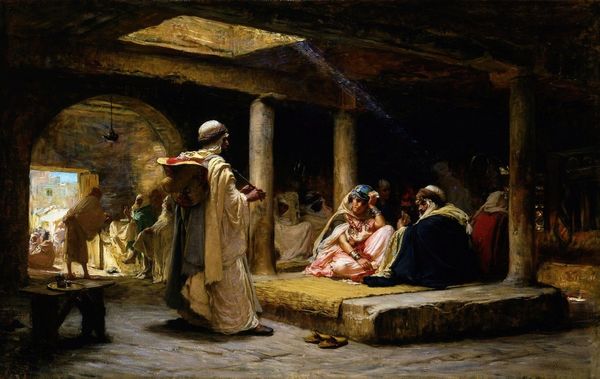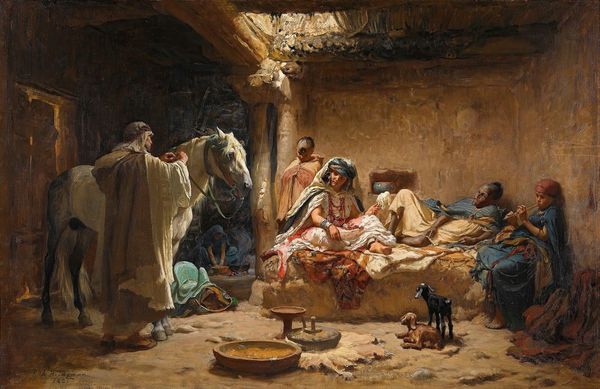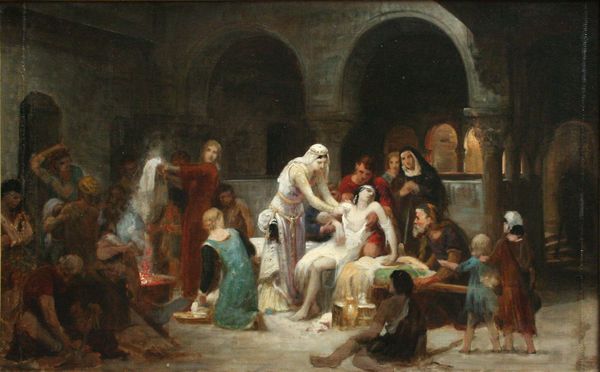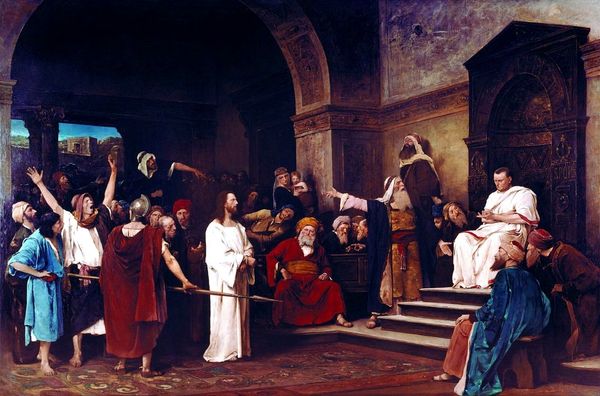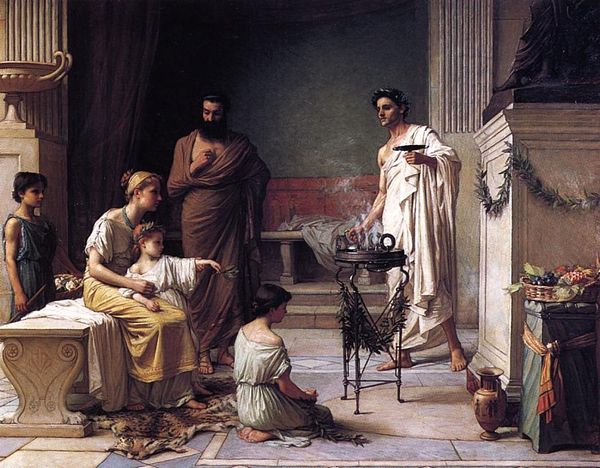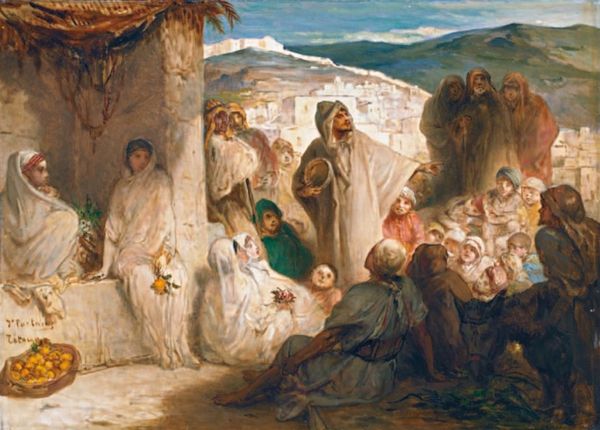
painting, oil-paint
#
narrative-art
#
baroque
#
painting
#
oil-paint
#
figuration
#
history-painting
Copyright: Public Domain: Artvee
Curator: Carl Bloch’s painting presents a Baroque scene imbued with both drama and meticulous detail. Editor: My first impression? A somber palette dominates—shadows that amplify the vulnerability of the figures, highlighting the material reality of their suffering. Curator: The composition certainly invites layered analysis. We see Christ, bathed in light, in the act of, it appears, healing a group of disabled and suffering people. Note how Bloch uses stark contrasts in color and light to create focal points and convey spiritual tension. Editor: I find myself focusing on the conditions, or really the economics, represented here: the tired mother bearing what seems to be water, the beggars with almost performative costuming. The materiality, in those rough, seemingly hand-spun fabrics, speaks of hardscrabble lives defined by work. How did this material come into being? Who made it, and under what conditions? Curator: An interesting perspective. One could also argue that Bloch uses clothing symbolically—Christ in pristine white juxtaposed against the rags. He sets up a visual system with religious and philosophical undertones. Editor: True, but the actual labor needed to *make* the fabrics Christ’s contemporaries wore, even simple homespun garments—that's integral. This informs not only the historical context but deepens our reading of the composition itself. Notice the contrast between Christ’s flowing garb, presumably machine-made or mass-produced, set against the woven tatters that surround him, literally grounding this scene with evidence of manual labor. Curator: These textures create dramatic contrasts that lend visual richness to the picture plane and offer symbolic weight to this representation of religious narrative, though your attention to the means of fabric production presents a new lens for appreciating that. Editor: Well, it's by considering labor and materiality that the full narrative—including themes of societal marginalization—unfolds for me. It allows the art’s broader social resonances to reverberate. Curator: Yes, and these differing entry points demonstrate that formalism, too, isn't hermetically sealed—analysis thrives on varying voices and interpretations. Editor: Precisely! Appreciating an artwork necessitates understanding its construction in all senses: as an arrangement of line and color, sure, but also as a material object reflecting a particular social world and an embodied way of making.
Comments
No comments
Be the first to comment and join the conversation on the ultimate creative platform.
